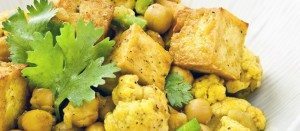
My first Indian friend, Vivian, was my department chairman at the university. He always had a twinkle in his eye and a joyfulness about eating Indian food, especially food from southern India. His wife, Mary, was Irish and from Chicago, but Vivian’s family taught her to cook for her husband, which she did with a relish and apparent pleasure. She and Vivian enjoyed inviting me for dinner, which was no less a treat for me.
I had never really known Indian food except for an Indian fast food cafe near my home that was very mediocre. My bias was purely a function of not having known the real deal. Mary told me that her cooking skills were only as good as they were because Vivian’s sisters, who were medical doctors, spent much time teaching her to cook so that she could please their younger brother. They wanted Vivian well taken care of if he was moving to the United States. And indeed he was.
Indian food is quite simple, and easy to cook if you have the right ingredients and a bit of patience learning what goes with what. One of those ingredients, which has been very accessible for some time now in America, is tofu, a product of soy beans made into bean curd. I always felt that tofu became the flavor you gave it, since it so readily absorbs whatever flavor you impart to it. In the writing of this article, I found out a lot more about tofu, which I think you may enjoy knowing as well.
As Mark Bittman informs us in How to Cook Everything Vegetarian, tofu is a nutritional powerhouse, as versatile as the egg. It comes in different forms and shapes and can be prepared in no less a range of options than meat or vegetables can—including fried, stir fried, baked, grilled , poached, braised, whipped, blended or cold in smoothies and sauces. I personally enjoyed replacing tofu for eggs in a chocolate cake recipe I wrote about a year ago. The cake was a hit, but few eaters believed it was made with tofu. They said it tasted too good.
Bittman indicates that while tofu is relatively new to most of us, it is, in fact, a couple of thousand years old in China, where it is thought to have been produced as early as the second century BC. The word tofu is Japanese, while also called bean curd or dofu in China. But, whatever its name, it’s simply coagulated soy milk. The process to make it seems easy enough, and I refer you to Bittman’s section called “Homemade Tofu” on page 656. But in a nutshell, for the most common tofu, the curds of soy milk are drained from the whey and pressed into a mold. Many cultures feature tofu in their recipes including those of India, Pakistan, Bangladesh and China among many other Asian countries. It’s also one of the mainstays of American vegetarian cooking. Here’s one of my favorites that I hope you like too.
Indian Curry with Tofu, Fava Beans and Coconut Milk
Serves 4
1 lb block firm tofu
1 tbsp canola oil
½ fresh poblano chile, diced
1 medium onion, small dice
4 garlic cloves, small dice
1 inch knob of root ginger
peeled and grated
1 rounded tsp curry powder
¼ tsp ground turmeric
1 bay leaf
8 oz canned coconut milk
2 tsp white wine vinegar
1 tsp garam masala
1 tsp ground coriander
½ cup fava beans, parboiled 5 minutes, peeled and simmered for another 20 minutes until soft (if fava aren’t available, use fresh peas)
1 tbsp fresh cilantro, chopped
1. Cut tofu into approximately 1-inch cubes and set aside.
2. In a 12-inch skillet on low heat, add the oil, poblano chile, onion, garlic and grated ginger, and sauté until the chile and all vegetables are soft, about 8 to 10 minutes.
3. Add the curry powder, turmeric and bay leaf, and stir into the mixture for 1 minute at low temperature. Add the coconut milk and stir in. Bring to a boil and then a gentle simmer for 5 more minutes.
4. Add the vinegar, garam masala and coriander and mix at a simmer for another 2 minutes.
5. Turn the heat up to medium and add the tofu pieces. Gently mix and heat for 4-5 more minutes without breaking the tofu up into smaller pieces.
6. Add the fava beans and reheat to a boil and then simmer for 5 minutes until the entire mixture is thoroughly cooked through.
7. Add the chopped cilantro leaves and mix.
8. Serve with Texmati rice and 1 ounce of butter.
9. Garnish with 1-2 tablespoons additional chopped cilantro, if you like the flavor.
Please send comments, questions or observations of interest to Chef Alan at azox@zoxkitchen.com. For details about past columns, catering or Chef Zox’s blog, please visit www.zoxkitchen.com.

